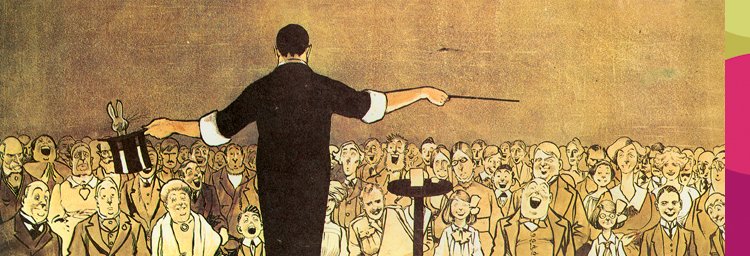
We are delighted to announce our new permanent exhibition on Black Screen History, which you can find in the upper gallery of the museum. The exhibition was curated by intern Chloé Jarrett-Bell, who you can see here with the display. Chloé has also curated a digital sway exhibition and recorded two podcasts and you can find links to these below along with her blog on the process of curating the story of black people on screen. Chloé's internship was funded by Policy@Exeter.
---------
I was given the great privilege (and daunting task) of curating a permanent Black Screen History exhibition for the museum. I had never curated a collection before and so I was excited but quite nervous. With guidance from the curator of the museum, Dr. Phil Wickham, I soon learnt how to use visual materials to tell a story. The next question I asked myself was: How do you tell the story of such a complex history? My buzzwords for this project were presence and integration. Therefore, I chose to include both the good and the bad in this exhibition. Including the successes and downfall of various people and movements within this history ensures that the cycle of absence is broken, and Black people, in all eras of history, are represented.
By incorporating the negative and positive, I hoped to neither sugarcoat nor pander or exclude nor dispirit. Paradoxically, the more I researched the more I realised there was a lot I didn’t know. I learnt that the word that characterised the relationship between Black people and Screen History is absence. Naturally, this made me want to include every molecule of information I found out about Black talent in the history of the moving image. Every name mattered to me, every experience, every trial, but if I were to include all that information, I would have needed five museums’ worth of space. Rather than a drawback I saw this as a blessing, as it allowed me to focus my storytelling and let the items speak for themselves.
You can find my display in the upper gallery of the museum, and it covers two shelves of the permanent exhibition space. I also had the opportunity to create a Digital Trail, two podcasts and this blog alongside the display which helped me to tell this fascinating story. In this blog I am going to look at three different themes and explain some of my more controversial decisions through these.
Blackface
Like the Boogeyman or the dark, when I was a child, I was afraid of blackface. To this day when I see it in a history book or in an old film, I feel unsettled. I was searching for some The Green Pastures material for the display when I was interrupted by a programme for The Jazz Singer at Leicester Palace, showing Al Jolson in blackface. I gasped…and then I felt embarrassed that I gasped. ‘I’m no longer a child so why was I afraid?’ I asked myself. It soon occurred to me that blackface is not harmless imitation or parodying- it is an interruption. I realised that the physical interruption I experienced, demonstrated how blackface was also a wider interruption to the representation of Black people in screen history. Unfortunately, blackface is a big part of the history of theatre, television, and cinema.
It was as early as 1919 that it was publicly suggested in The Kinematograph and Lantern Weekly that Black people should be the only people playing Black characters on screen. Though it seems obvious, this was a revolutionary take from white actor Ivy Duke, as most black roles in this period were played by white people in blackface (Bourne 10-11). Blackface is the reduction of a people group to a powder or paint that one applies, insinuating that there is nothing wrong with performing ‘Black’ or ‘Asian’ or ‘Pacific Islander’ or ‘Native American’ because they were less and ‘other’. When one wishes to defend those of us who find blackface offensive and condemn the horrors of The Jazz Singer (1927), The Singing Fool (1928), Topsy and Eva (1927), The Black and White Minstrel Show (which ran on TV for 20 years until 1978), Babes in Arms (1938), Disney’s Song of the South (1946), Dimples (1936) and more we are met with rage-filled backlash; shouts of protecting nostalgia over protecting people, preserving enjoyment over promoting equality, and a call for this generation to be ‘less sensitive’ instead of an evaluation of the insensitivity of past actions. Moreover, though I use the word ‘past’, these points of view still exist today. If you do not want to take my word for it, type in any of the films mentioned above and look at the recent Google Review comments underneath.

Scott and Whaley sheet music 'Just a Couple of Pals' from Take off That Hat,1938 EXEBD 55441
I included the Scott and Whaley sheet music in the display because the duo was a strange case. In the Trail podcast, I mentioned that they were a minstrel duo with one Black performer and one white performer in blackface, but it turns out that Scott and Whaley were two Black performers, with one (Scott) choosing to wear Blackface. Now it seems strange to see a Black performer in blackface, but Scott and Whaley were extremely popular in their time. They’re included in the display because their existence and popularity demonstrate the normality of blackface, and perhaps the perceived necessity of something as offensive as blackface to be successful in film and television. Scott and Whaley show the complexity of Black performance and identity in the UK and America in the early 20th century.
An insightful recent article from Hollywood Reporter goes into great depth on the issue of blackface in Hollywood. Click here to read it. (https://www.hollywoodreporter.com/news/general-news/blackface-hollywood-al-jolson-judy-garland-dave-chappelle-1185380/)
The plasticity that the author mentions in this article links to the otherisation of the Black body. In screen history the Black body was seen as an accessory, one which is comedic and used for the pleasure of white audiences at the expense of Black people. Though this is a bitter and uncomfortable part of screen history, not just Black Screen History, but all Screen History, it was still a reality and in reflection, it makes the act of Black people playing Black characters feel even more triumphant.
Diahann Carroll and the Digital Trail

Diahann Carroll's autobiography (EXEBD 39562)
Black presence in screen history moved from a place of absence to racial mimicry and mocking, to partial visibility and finally to varied representation. Therefore, the presence of the Black performer is something to be celebrated not just in the display but on the digital trail too. Another question one may ask is why I chose the late, great actor Diahann Carroll as my first image for the Digital Trail (click here) when I could have used so many other people. To me, Carroll was graceful, intelligent, beautiful, poised, talented, daring. She was not only the first Black woman to star in her own TV show Julia, but she was also a powerhouse film actor in classics like Carmen Jones and Porgy and Bess starring famous names such as Sidney Poitier, Dorothy Dandridge, Pearl Bailey, Ruth Attaway, Sammy Davis Jr, Leslie Scott, Brock Peters and Clarence Muse. Now, I have never watched Dynasty (my family are strict Dallas fans) and while I knew of her character, the fabulous Dominique Deveraux, I did not know her story line. Imagine my surprise when I read Carroll’s autobiography assuming she is narrating her own memory of her white father on his deathbed finally admitting she is his daughter, when in reality, Nancy Malone, the director, yells ‘“Cut,” in the next line and Carroll reveals she is describing her character Deveraux’s life and not her own (3, Carroll, D., & Firestone, R. (1986). Diahann: An Autobiography (1st ed.). Little Brown & Co.). Diahann Carroll was a force of nature, still able to surprise and inspire even after her passing. Reading her life story was fascinating but watching Julia was a moment of transformation during my research. Before I became a Fresh Prince of Bel-Air, Sister Sister, Blackish and Everybody Hates Chris viewer, through YouTube, Netflix and various streaming platforms, I got to experience television shows contemporary with Julia. My television guilty pleasures included The Brady Bunch, Eight Is Enough, The Dick Van Dyke Show, Growing Pains, 7th Heaven, Full House… I am ashamed to go on. I am teasing, but in truth I watched a lot of white people play house on television and Diahann Carroll showed me that Black people could exist in these pre-’90s happy-family spaces too. Julia was a gateway show which led me to Room 222 and Good Times and these shows opened the door for so many more shows with black casts and Black main characters in both British and American television. Finally, Black people but especially Black women have not received the acknowledgement they deserve for their part in Screen History, and so I wanted my first image to signify that this exhibition aimed to highlight those who have been pushed aside for far too long.
View Master Reels and Home


Viewmaster Reels: Queen Elizebeth Visits her people in Nigeria EXEBD 63345
When looking at real-life representations of the past, through documentaries or photographs, they often centre on the Western world. Gathering materials for the display, I also searched for materials from Sierra Leone, where my family is from. While I did not find materials on Sierra Leone, I found View Master reels of colour images of Port of Spain and Asphalt Lake, Trinidad, Nigeria and stereo cards for South Africa. I immediately felt overcome with emotion at seeing Black people and nature from 1900 to the 1950s in these 3D images. It felt surreal and so I had to add these reels to the display, even though I would argue that the best way to experience these items is by coming into the museum and having a look at them yourself in the reading room.
Podcasts
Due to the complex nature of displaying many aspects of Black screen history, specifically the older items, having digital materials through which you can contextualise items is extremely helpful. In the Trail Podcast I go into detail on the items I included and why.
During the process of curating this exhibition I was lucky enough to be advised by filmmaker Dr. John Sealey on some of my work. He also agreed to an interview for my podcast episode on a section of the exhibition; Old Hollywood: A Seat at the Table. In this podcast episode we discuss Black presence in Old Hollywood and what films such as Imitation of Life say about the Black experience.
There are QR codes for both podcasts in the display, in the online exhibition and links at the end of this blog!
There is still so much more to learn about Black Screen History, (my extensive film and television watchlist is proof of that) but I hope that you enjoy seeing this display amongst all the wonderful artefacts the museum has to offer. I am honoured to have curated a collection that is a small part of the mammoth feat that is promoting and preserving the history of the moving image.
Link to Digital Trail
https://sway.office.com/zCWve9OmG2wn8Fod?ref=Link
|
|
|
Black Screen History: A Tale of Trailblazing Talent, Tribulation, Trials, and Triumph. The silver screen, the big screen, Hollywood- it is all a complex business. What we see on screen is more than just entertainment. Some describe films and television shows as a mirror reflecting our s sway.office.com |
Link to Trail Podcast
Link to Old Hollywood: A Seat at the Table. Featuring Dr. John Sealey Podcast
July 2022





